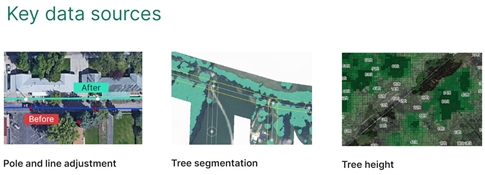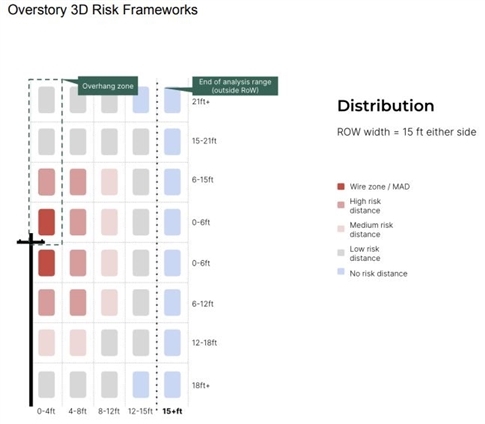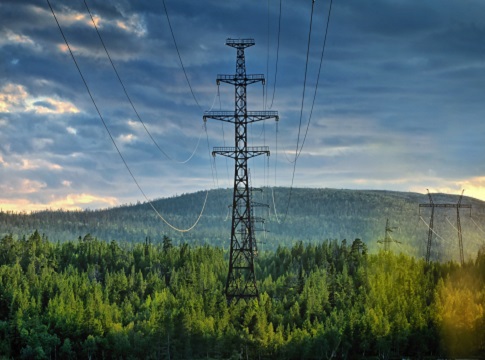Related News
Related News
-
EWEB completes helicopter installation of salmon habitat features
EWEB adds downed trees and 2,000 tons of gravel to the Uupper McKenzie River below Tamolitch Falls to improve spawning habitat.
Find Out More -
Court rules in favor of EWEB in Carmen-Smith litigation
The U.S. District Court in Eugene has granted EWEB's motion to dismiss a lawsuit brought under the Endangered Species Act pertaining to fish passage at EWEB’s Trail Bridge Dam. The favorable ruling clears the way for EWEB to continue advancing towards implementation of permanent fish passage at the dam.
Find Out More -
EWEB proposes modified plan for permanent fish passage at Trail Bridge Dam
After eight months of extensive collaboration and analysis with scientific experts at two federal regulatory agencies, EWEB is proposing an improved plan to build permanent fish passage facilities at Trail Bridge Dam on the McKenzie River.
Find Out More -
Sustainability Snapshot - Ideal Steal July 2025
Our second Sustainability Snapshop highlights a project where EWEB helped a local industrial warehouse upgrade over 1,000 flourescent lights to new efficient LEDs.
Find Out More -
EWEB prepares for wildfire season with risk mitigation measures
EWEB is building a more resilient electric system to weather various types of disasters, from wildfire to winter storms.
Find Out More -
Sustainability Snapshot - Homes for Good May 2025
Our first Sustainability Snapshop highlights a project where EWEB teamed up with longtime partner, Homes for Good, to deliver ductless heat pumps to income-eligible apartment rentals.
Find Out More -
EWEB, Lane County host open house to gather feedback for “Leaburg Transportation Alternatives Analysis”
“What is the Future of the Leaburg Dam Bridge?” open house exhibit on display at Lloyd Knox Park Visitor Pavilion through July 25
Find Out More -
EWEB Pilots New Line Safety Program for 4th graders.
This year, EWEB is ramping up power line safety for children, specifically 4th graders.
Find Out More -
Improving habitat resiliency throughout the Upper McKenzie
Environmental Responsibility is a core guiding value for EWEB decision-making. This summer, EWEB continues its commitment to environmental stewardship with a robust slate of habitat enhancement updates throughout the upper McKenzie River, across the footprint of the Carmen-Smith Hydroelectric Project.
Find Out More -
EWEB weighs multi-billion-dollar decision affecting energy supply
EWEB is weighing energy supply decisions that will cost nearly $2 billion over the next two decades.
Find Out More -
Hayden Bridge celebrates 75 years of service as EWEB looks forward to a new era of water resiliency
EWEB Water Treatment Supervisor, Toby Dixon, looks back at how the Hayden Bridge Water Filtration Plant has changed over the years and explains what EWEB is doing to secure a more resilient water future.
Find Out More -
EWEB opens applications for 2025 Electric Mobility Community Grant
The Eugene Water & Electric Board is now accepting applications for the 2025 Electric Mobility Grant, reinforcing EWEB's commitment to sustainability and cleaner transportation.
Find Out More -
Walterville Hydroelectric Project to remain offline through 2025
EWEB continues to pursue repair plans but must fulfill additional investigation requirements before resuming operation.
Find Out More -
Watch the Recording: Financial Preparedness for Disasters
How will you financially recover after a disaster? This seminar gives key insights into preparing your finances ahead of time.
Find Out More -
Greenpower subscribers vote to award Greenpower Grant to SquareOne Villages
The Greenpower Grant, funded solely by voluntary customer subscriptions, supports local sustainability projects.
Find Out More - Show More
EWEB invests in satellite-based forestry analytics for vegetation management
May 30, 2024 • By Robyn Smith, EWEB Communications

Vegetation management is an essential tool in EWEB's power outage mitigation toolbox.
As we witnessed during the back-to-back ice storms in January, hazardous falling trees and snapped branches coming down on power lines create prolonged outages and unsafe working conditions during severe weather events.
That’s why, each year, crews trim over 500 overhead 'line miles' of vegetation to minimize falling trees and branches, avoid outages and increase the electric system's reliability.
EWEB maintains over 1,300 miles of overhead transmission and distribution lines. To aid crews in identifying hazardous vegetation growth in a sometimes heavily forested service territory, EWEB is utilizing a new satellite-based forestry analytics software called Overstory.
"Using remote sensing data, we help utilities optimize resources, mitigate risk, and strategically direct the vegetation management that matters most," said Overstory Customer Success Manager Kathryn Morse.
The first year's analysis (conducted in the fall of 2023) focused on areas with denser tree coverage, like south Eugene and McKenzie River service areas. The satellite imagery captures overhead power lines with nearby tree canopies and uses technology to quickly identify areas that could benefit from additional vegetation management. It also creates a heat map of places with high tree mortality—these 'hazard' trees are more likely to fall into powerlines during severe weather.
EWEB's Resiliency Program Manager Jeannine Parisi said, "The goal is to efficiently target tree-trimming in areas of highest risk and develop an action plan to address hazard trees that pose a fall-in risk to our overhead lines. It's especially helpful for terrain that's hard to access for visual inspection."

How the vegetation intelligence works:
- It creates vegetation data from remote sensing sources (detects tree height, health, and species).
- It combines data that matters most for EWEB (pole and line location, wildfire risk maps, trim specifications, terrain, and slope maps).
- It helps build a data-driven vegetation management program (management cycle prioritization, hazard trees, encroachment, reliability forecasts, and contractor audits).

In May, the Overstory team joined EWEB's vegetation crew in the field to review the first-year data analysis. In the field, the team easily located some of the riskiest areas.
"By looking at our risk matrix, utilities can identify the amount of vegetation nearby, both horizontally and vertically, to conductors, which helps us accurately project vegetation-related outages," said Morse.

Last year, Overstory satellite imaging analyzed vegetation across 180 ‘line miles' and found that EWEB's current vegetation management practices are very effective at maintaining clearance, with just a few areas that might need additional trimming work.
"We just captured new satellite imagery to update the analysis, particularly given the amount of tree damage from the ice storm," said Parisi. Overstory will analyze about 425 ‘line miles' of EWEB's electric system this year.
This forward-thinking vegetation management tool is just one example of how EWEB proactively invests today to prepare for a resilient tomorrow.
Related Programs
Trees are a major cause of power outages in the Eugene area. To help prevent tree-related outages we proactively prune trees to help keep our equipment clear.



